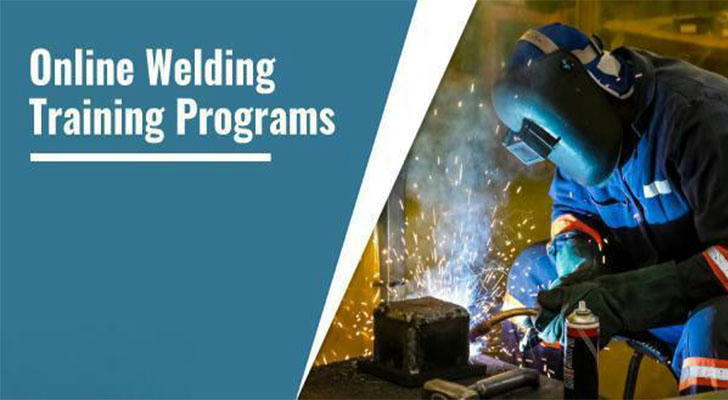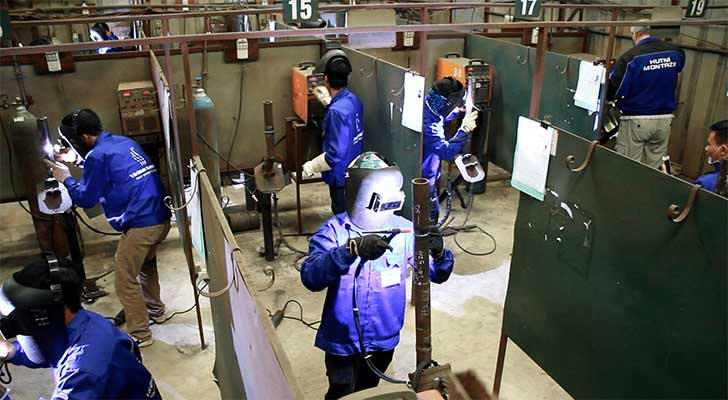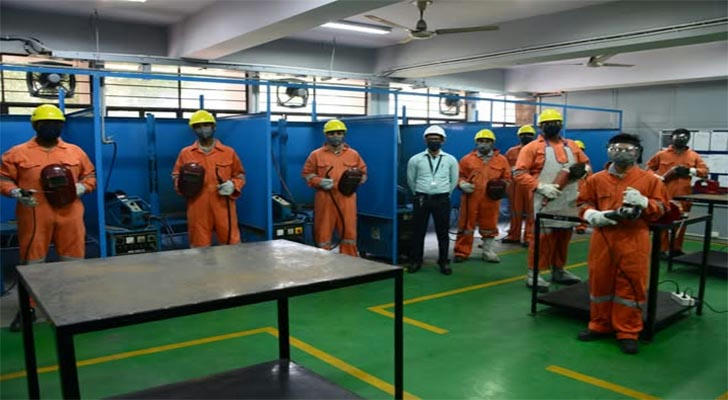Combining Online and Offline: This Is How You Can Learn Welding Training!

As the global labor market evolves with advancements in automation and infrastructure, skilled trades continue to serve as essential pillars in multiple sectors. Among them, welding remains a high-demand and high-impact profession, central to construction, manufacturing, shipbuilding, and aerospace. While traditional welding education was confined to hands-on learning, today’s hybrid training models—blending online theory with offline practice—offer a more scalable, flexible, and effective route to mastering this trade.
Why Welding Still Matters in 2025 and Beyond
According to the U.S. Bureau of Labor Statistics (BLS), welding-related occupations are expected to generate approximately 42,600 job openings each year from 2022 to 2032. Although the overall employment growth rate is modest (2%), this is largely due to replacement needs as older professionals retire.
Additionally, the American Welding Society (AWS) estimates a skills gap of over 375,000 welders in the U.S. by 2026, due to a combination of industrial expansion and aging workforce demographics.
These figures are reinforced by industry trends:
• The Global Welding Equipment Market, according to Grand View Research (2024), is expected to reach $29.4 billion by 2030, growing at a CAGR of 4.6%.
• Infrastructure modernization projects, including renewable energy and transportation, are increasing demand for specialized welders in pipe fitting, TIG/MIG processes, and underwater welding.
How Hybrid Welding Training Works: A Step-by-Step Guide
The hybrid model involves a structured combination of remote theoretical instruction and on-site, hands-on practice. Below is a typical pathway for learners:
Step 1: Choose an Accredited Program
Search for institutions that offer hybrid welding certifications. Reputable sources include:
• Community colleges with vocational departments
• Trade schools recognized by AWS or NCCER (National Center for Construction Education and Research)
• State workforce development boards with training partnerships
Step 2: Complete Online Learning Modules
These courses generally last 4–6 weeks, depending on the program. Topics include:
• OSHA-compliant safety protocols
• Welding process types: SMAW (Stick), GMAW (MIG), GTAW (TIG), FCAW (Flux-Core)
• Welding positions (1G to 6G)
• Blueprint reading and weld symbols
• Introduction to metallurgy and heat effects
The National Center for Education Statistics (NCES) reported in 2023 that 72% of adult learners preferred asynchronous formats for balancing work and study. Most platforms provide video lectures, virtual simulations, digital quizzes, and peer discussion boards.
Step 3: Attend On-Site Skills Labs
This is the most critical phase, usually lasting 4 to 12 weeks, depending on intensity. Conducted in certified welding shops, learners will:
• Set up and calibrate welding equipment
• Perform welds in multiple positions on different materials
• Pass bend tests, visual inspections, and x-ray inspections
• Practice industry-grade joint types (butt, fillet, lap)
These labs are overseen by instructors who typically hold AWS Certified Welding Inspector (CWI) or Certified Welding Educator (CWE) credentials.
Step 4: Prepare for Certification
Common certifications pursued include:
• AWS D1.1: Structural Welding—Steel
• ASME Section IX: Pressure Piping & Vessels
• API 1104: Pipeline Welding
Programs may include mock exams, timed practical tests, and individualized skill assessments.

Benefits of Hybrid Training: A Comparative Analysis
| Factor | Fully Offline Model | Hybrid Model |
|---|---|---|
| Time Flexibility | Fixed class hours | Self-paced theory, flexible workshops |
| Accessibility | Requires local attendance | Broader geographical access |
| Cost Efficiency | Higher due to full-time presence | Reduced cost in theory phase |
| Learning Effectiveness | Practical focus only | Balanced theory + practice |
| Instructor Interaction | Real-time only | Mixed real-time + forum/chat support |
A 2022 AWS-sponsored study found that students in hybrid programs performed equally well or better in AWS D1.1 exams compared to those in traditional-only settings, due to enhanced pre-lab preparation.
Challenges and Mitigations
Despite its advantages, the hybrid model isn’t without limitations:
1. Self-Discipline Required
Learners must stay motivated without in-person supervision during the theory phase. Solutions include:
• Weekly check-ins with mentors
• Progress-tracking dashboards
• Peer accountability groups
2. Equipment Gaps at Home
Hands-on simulation at home is limited. Some institutions offer VR welding trainers (e.g., Lincoln Electric VRTEX), though access is not universal.
3. Logistical Constraints
Attending in-person labs may be difficult for learners in rural or remote areas. Some schools offer “boot camp” intensives that condense all practical work into 1–2 weeks.
How to Evaluate a Program’s Quality
Before enrolling, consider asking the following:
• Is the program recognized by AWS, NCCER, or your state’s licensing board?
• What is the student-to-instructor ratio in hands-on labs?
• How many hours of practical training are included?
• Do graduates pass certification exams on the first attempt? (Request pass rate statistics.)
Additionally, verify if the training center includes career guidance, resume workshops, or connections to local union apprenticeship programs.

Conclusion
Hybrid welding training combines the best of two worlds: flexibility and foundational knowledge from online learning, and technical expertise through supervised, real-world practice. With industry demand for skilled welders remaining strong, especially in sectors like construction, renewable energy, and infrastructure, now is a strategic time to consider entering the field.
For those willing to commit time and effort, the hybrid model provides a clear, structured, and modern path to acquiring a skill that remains fundamental to the global economy.
